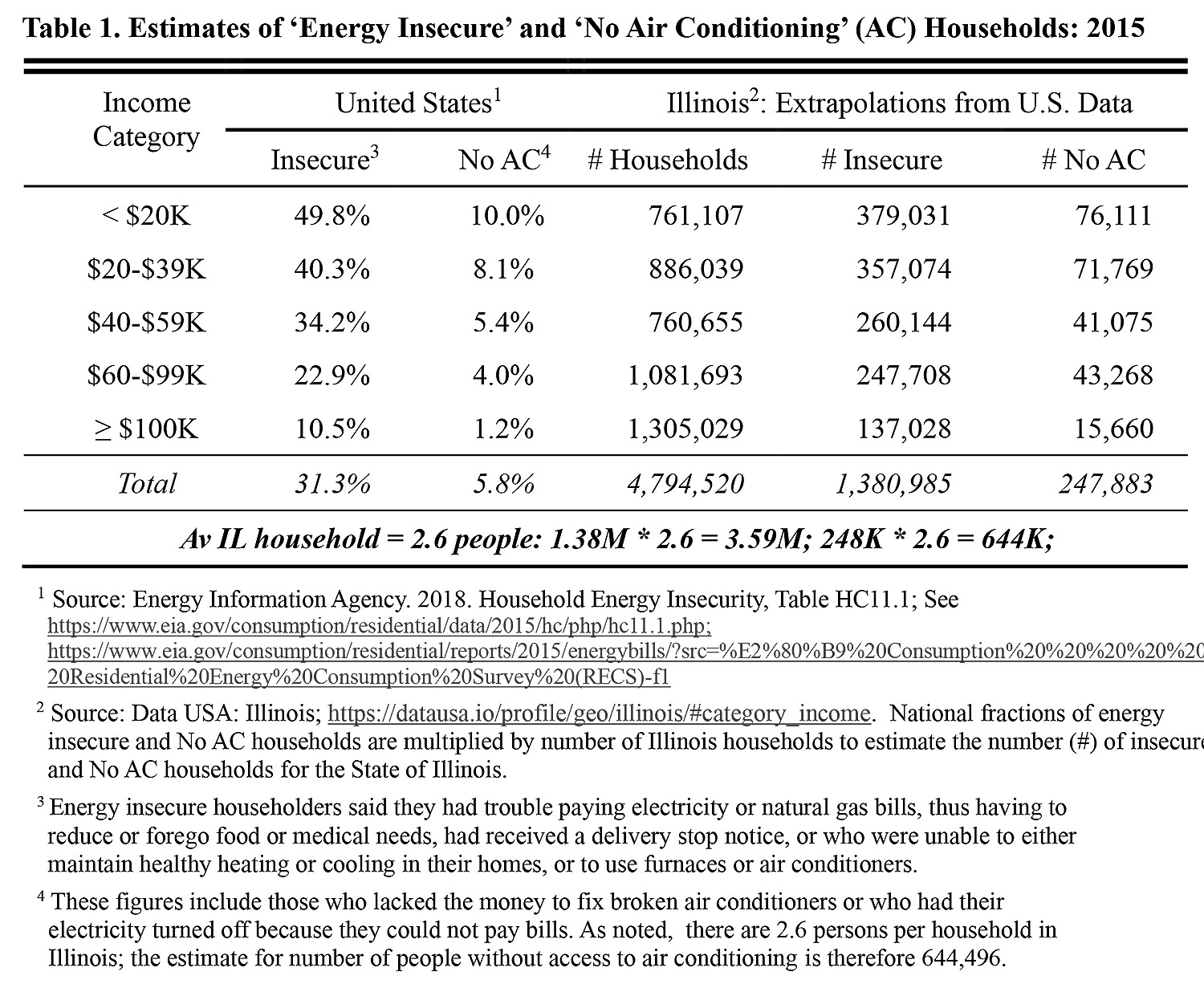Last month I used the sinking of the Titanic as a metaphor for a heat wave disaster in Illinois where lives lost could equal or exceed the 1,500 Titanic passengers who perished in the frigid waters of the Atlantic. The difference? In Illinois it will be death on dry land due to boiling, unremitting heat.
The underlying causes for both events will be eerily similar. Titanic’s owners believed their ship could sustain major damage and still float until another ship could rescue its passengers. Thus, it had only half the lifeboats needed to save all passengers while its captain neglected crew and passenger lifeboat drills. Similarly, Illinois government officials assume our grid will hold up well enough during a big heat wave that we don’t really need lifeboat-like cooling centers. Furthermore, heatstroke protocols do not allow our paramedics to treat heatstroke victims. In short, there is little or no preparation for a major heat wave.
Lack of preparation involves all levels of Illinois government. The Rauner Administration’s 2018 Natural Hazard Mitigation Plan dismissed heat waves with climate denying obfuscation (Rau 2022a) and Pritzker’s Administration has left Rauner’s plan untouched.* Since the state ignores heat waves, counties and cities do the same (Rau 2020a, 2022b). The federal government’s Stafford Act, which defines the Federal Emergency Management Agency’s (FEMA) mandate, helped ensure this outcome because it does not allow FEMA to declare heat waves as natural disasters. Therefore, heat waves cannot qualify for federal assistance (Nielsen 2023). Since there is no FEMA money for heat wave preparation or emergencies, states focus on other hazards, and counties and cities follow the state’s lead.
A bipartisan fix of the Stafford Act is stuck in Congress. With enabling legislation, FEMA could stockpile mobile cooling units to rush to heat-stricken states. This capability could save many Illinois lives because, outside of Chicago, the number of lifeboat-like cooling centers makes Titanic’s 20 lifeboats look like overkill. The Titanic had 2,240 people on board; Illinois has 12.59 million residents. Yet we have only a small, ragtag collection of dubiously named cooling centers — i.e., there is no common standards, staff training, and hours of operation, or backup power. As Table 1 indicates, there are more than 600,000 Illinoisans who lack air conditioning and another 3.5 million who may be unable to afford continuous operation of AC during a heat wave. Many will have nowhere to go during an emergency.
A FEMA spotlight on heat waves would also shake up the paramedic-emergency room nexus which now manages heatstroke. Unlike cardiac arrest, which receives “treat first, transport second” status, with defibrillators employed immediately in the field, heatstroke in Illinois is defined as a “transport first, treat second” condition (Rau 2020c). Paramedics do not treat heatstroke; instead, they drive subjectively diagnosed victims to emergency rooms for care, which is okay for a few heat-stricken people. However, as brutal heat waves in Chicago (1995) and Paris (2003) revealed, the paramedic-ER nexus will collapse under the weight of a massive influx of heatstroke victims. Paramedics will be overwhelmed by calls for assistance and their “transport first protocol” will bury ER rooms. Unlike states which could see the “COVID wave” coming a month in advance, giving them time to “surge” medical backup to ERs, heatstroke cases will literally explode across several days (Rau 2020b). No medical calvary can come to the rescue in time. People will die in the field or in ER waiting rooms.
The solution? An adaptation of San Francisco’s Neighborhood Emergency Response Teams, or NERTs, where 17,000 residents are trained to assist the fire department during a big earthquake (Rau 2024). Illinois residents can be trained to assist paramedics because heatstroke treatment simply involves timed immersion in water of the same temperature that killed Titanic’s occupants (Rau 2020c)!
References
* Personal correspondence with Pritzker’s office.
Nilsen, Ella 2023 (Aug 8). Extreme heat is the deadliest natural disaster. FEMA can’t treat it like one. CNN; https://www.cnn.com/2023/08/08/politics/heat-fema-federal-response-biden-climate/index.html
Rau, William. 2020a (Feb 26). Heat Waves — In Red & Black | Climate matters. Community Word; http://thecommunityword.com/online/blog/2020/02/26/heat-waves-in-red-and-blue-climate-matters/
- 2020b (Jul 29). Coronavirus Climate Crisis Crosswalk: COVID Surges, Heat Stroke Explodes. Community Word; http://thecommunityword.com/online/blog/2020/07/29/heat-waves-in-red-and-black-coronavirus-climate-crisis-crosswalk-covid-surges-heat-stroke-explosions/
- 2020c (Aug 26). How not to treat heat stroke during an intense heat wave. Community Word; http://thecommunityword.com/online/blog/2020/08/26/heat-waves-in-red-and-black-how-not-to-treat-heat-stroke-during-an-intense-heat-wave/
- 2022a (May 1). Illinois unprepared for killer heat. Community Word; http://thecommunityword.com/online/blog/2022/05/01/heat-waves-in-red-and-black-illinois-unprepared-for-killer-heat/
- 2022b (May 31). Emergency Management hiding behind wall of voodoo statistics. Community Word; http://thecommunityword.com/online/blog/2022/05/31/heat-waves-in-red-and-black-emergency-management-hiding-behind-wall-of-voodoo-statistics/
- 2024 (Mar 7). How many lifeboats were on the Titanic? Community Word; http://thecommunityword.com/online/blog/2024/03/07/heat-waves-in-red-black-how-many-lifeboats-were-on-the-titanic/


